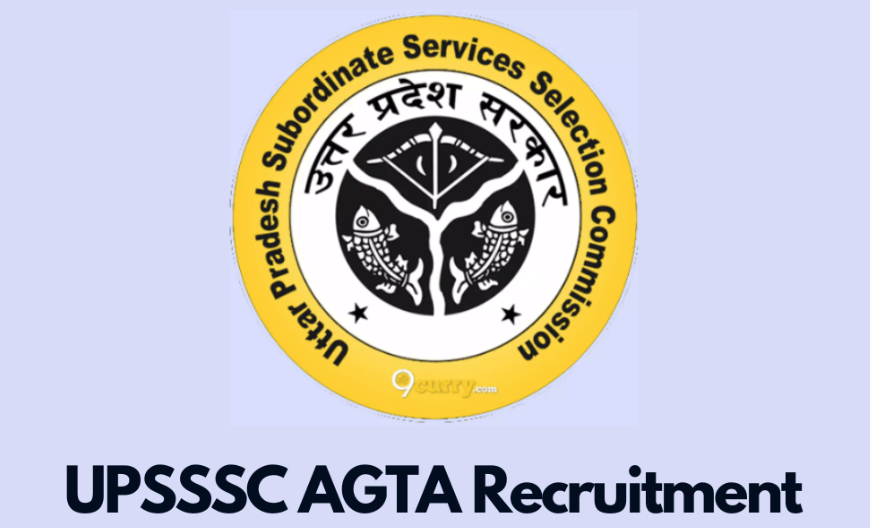The Uttar Pradesh Subordinate Service Selection Commission (UKSSSC) has released notification on 3446 posts of agriculture technical assistant (pravidhik sahayak) aka, AGTA. The last date to apply online for AGTA posts was 31 May 2024 and now it is the time when applicants has started preparing for AGTA exam 2024.
We have published a detailed UPSSSC AGTA syllabus and pravidhik sahayak examination pattern to be followed in the objective written exam. This is direct group-c recruitment and the selection will be based on written exam only.
UPSSSC ने कृषि प्रवीधिक सहायक के लिए आधिकारिक पाठ्यक्रम और परीक्षा पैटर्न जारी किया है। आवेदक पूर्ण पाठ्यक्रम को नीचे विस्तार से पढ़ सकते हैं। किसी भी संदेह के लिए कृपया हमसे संपर्क करें।
UPSSSC AGTA Syllabus 2024

PART-1
Crop Science:-
- Classification of crops, major cereals, pulses, oilseeds, millets, fibber, cash crops, spices and fodder, fruits, flowers and vegetables crops grown in the State and major crops production techniques and agro practices.
- Post-harvest management of produce.
- Fruits and vegetables preservation and processing
- Principles of crop rotation, cropping pattern and types of farming like dry farming, integrated farming, natural farming, mono cropping, multiple cropping, intercropping and types and importance of organic farming, it’s socio-economic importance/use.
- Importance of Seed, types of seeds and its production methods. Method of Seed treatment and its importance.
- Basic principles, scope and importance of crop protection, name of major equipments and chemicals used in pest control, integrated pest management.
- Insect, pest and diseases of major crops and its management. • Principles and Systems of produce storage, and factors affecting the quality of produce and storage & its management.
Biotechnology, Plant breeding & Crop physiology:-
- Importance and utility of Biotechnology in agriculture.
- Principles, use and importance of Genetics & Plant Breeding.
- Photosynthesis, Respiration, Evaporation, Plant Anatomy and Metabolism.
Soil and Water Conservation:-
- Properties and components of soil, process of soil formation, types of soil erosion and its conservation techniques.
- Essential nutrients found in soil, role and associated deficiency symptoms.
- Classification of fertilizers, its nutrient content and methods of application.
- Integrated nutrient management, types, importance and role of organic fertilisers/bio-fertilisers.
- Soil microbiology and its major role in crop production.
- Soil survey, methods of soil sampling and soil conservation techniques.
- Source, method and its importance of Irrigation.
- Basic concepts & methods of Drainage.
- Watershed Management.
- Types of pollution and environmental protection.
Agriculture Extension:-
- Principles of agriculture extension and rural development
- Extension methodologies, audio-visual aids, classification and their importance.
- Training: objectives, importance and it’s types
- Different programs and schemes of the Govt. of India and State Govt. run for the welfare of farmers and rural development.
Agriculture Economics & Schemes:-
- Role of agriculture in One trillion economy of U.P.
- Economic reforms in Agriculture sector.
- Concept of import and export of agriculture produce.
- Formulation of plans for Agriculture.
- Principles of Agricultural statistics.
- Principles and importance of agricultural economics.
- MSP of different crops.
- Agricultural Marketing.
Dairy & Animal Husbandry:-
- Different Breeds of domestic animals & feed management.
- Objectives and methods of animal breeding.
- Milk production and its distribution.
- Basic knowledge of Poultry farming, Fish farming, Apiculture and Seri culture.
- Major diseases of domestic animals, diagnosis and their treatment.
Part-2
Knowledge and concepts of computer and Contemporary Technological Development and Innovation in this field :-
History, Introduction and Application of Computer, Information Technology, Internet and World Wide Web (WWW).
General Knowledge related to:
1. Hardware and Software
II. Input and Output
III. Internet Protocol/IP Address
IV. IT gadgets and their application
V. Creation of e-mail ID and use/operation of e-mail VI.Operation of Printer, Tablet and Mobile
VII.Important elements of Word Processing (MS-word) and Excel Processing (MS-Excel)
VIII.Operating System, Social Networking, e-Governance
Digital Financial Tools and Applications
- Future Skills and Cyber Security
- Technological Development and Innovation in the field of Computer and Information Technology (Artificial Intelligence, Big Data
Processing, Deep Learning, Machine Learning, Internet of Things) and India’s achievements in this field etc.
Part-3
General Information Related to The State of Uttar Pradesh:- In this part of the question paper, questions based on History, Culture, Art, Architecture, Festivals, Folk Dance, Literature, Regional Languages, Heritage, Social Heritage, Social Customs and Tourism, Geographical Landscape and Environment, Natural Resources, Climate, Soil, Forest, Wildlife, Mines and Minerals, Economy, Agriculture, Industry, Business and Employment, Polity, Administration of Uttar Pradesh and Current Events and Achievements of Uttar Pradesh State in various fields etc. will be asked from the candidates.
UP Krishi Pravidhik Sahayak Exam Pattern 2024
- They’re will be 100 questions in examination question paper.
- The duration of exam will be of 2 hours.
- Negative marking of 1/4 marks for each wrong answer.
- 1 mark for each right answer.
| Part | Subject | Question | Marks |
|---|---|---|---|
| Part-1 | Crop science | 25 | 25 |
| Biotechnology, Plant breeding & Crop physiology | 10 | 10 | |
| Soil and Water Conservation | 15 | 15 | |
| Agriculture Extension | 05 | 05 | |
| Agriculture Economics & Schemes | 05 | 05 | |
| Dairy & Animal Husbandry | 05 | 05 | |
| Part-2 | Computer | 15 | 15 |
| Part-3 | UP GK | 20 | 20 |
Stay in touch with us for more updates on up agri technical assistant exam updates 2024. All information regarding syllabus, exam pattern will be available here.
